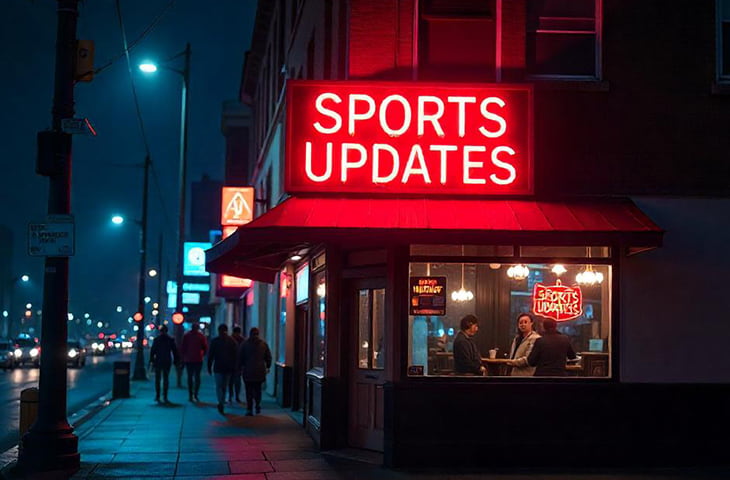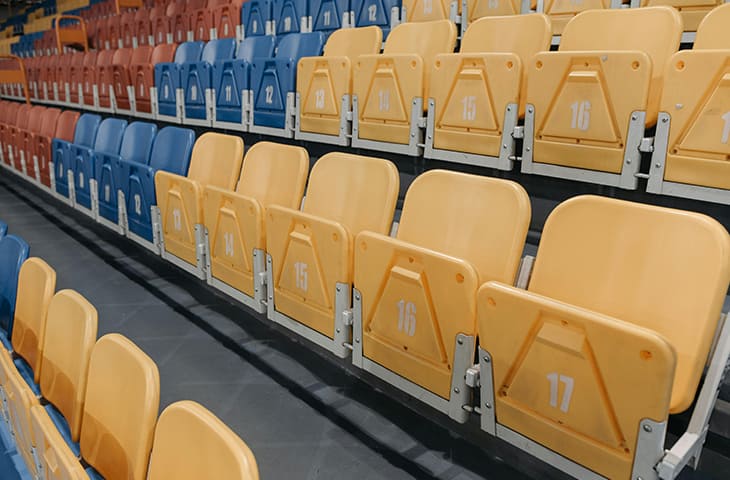How Ottawa Charge Built A Pwhl Championship Contender In An Unconventional Women’s Hockey Market

OTTAWA — The Ottawa Charge’s ascension from one of the bottom teams in the PWHL to a franchise that’s two wins away from winning the Walter Cup started with a trade deadline that was widely viewed as a head-scratcher.
In March 2024, Ottawa traded defender Amanda Boulier for Montreal forward Tereza Vanišová in a tidy bit of work in using its depth on defense to add more offense to its lineup. Then general manager Mike Hirshfeld traded fan-favorite Lexie Adzija for Shiann Darkangelo, who at the time had just one point in her PWHL career.
Ottawa fans were shocked by the early departure of one of the team’s breakout personalities. And the early reviews weren’t kind — gave Ottawa a C for the move.
In reality, that inaugural trade deadline was the start of a series of aggressive, smart and crafty roster moves over the last 14 months — including a blockbuster trade, savvy draft selections and efficient free agency signings — that have put the Charge on the doorstep of a league title.
It’s a method of roster building that has been out of necessity for Hirshfeld: Unlike most of the other original six franchises in the PWHL, the Ottawa market hasn’t historically been a hotbed for women’s hockey, and hasn’t exactly been a destination for top free agents. Case in point: Ottawa drafted Daryl Watts in the sixth round of the inaugural PWHL Draft. She led the team in goals in 2024 and signed with Toronto (her hometown team) in the offseason.
“We knew we were never going to be able to compete with Toronto,” Hirshfeld said in an interview with . “Montreal has a huge base, and they have (Marie-Philip) Poulin and others. Boston is always a hub for women’s hockey; everyone played university there. And Minnesota is always going to be a hub … So we’ve had to be creative.”
Both Vanišová and Darkangelo were identified by the organization as players who could hit another level if given the chance (and more ice time) in a new environment. At the time of the deals, Vanišová had a modest 10 points in 17 games for Montreal and Darkangelo was playing a fairly minimal role in Boston with very little production.
This year, however, only superstars Hilary Knight and Poulin had more goals than Vanišová, who broke out as a spark plug for Ottawa with the ability to drive offense — but also mix it up. In February, she and Jill Saulnier got in the first fight in the league’s history.
“She’s got elite talent and speed,” said Ottawa captain Brianne Jenner. “She can get away from defenders, get on defenders on the forecheck, and it’s been really fun playing with her … We’re lucky to have her.”
Darkangelo was actually a player Ottawa targeted in the original PWHL Draft, but Boston grabbed her first in Round 12. When the opportunity came along to trade for her, Hirshfeld said it was a “no-brainer.”
She didn’t make big waves in seven games last season, but after signing a one-year extension in the summer, Darkangelo has become one of the most improved players in the PWHL, finishing with 17 points in 29 regular season games — more than double Adzija’s production in Boston this season. She’s a top-line staple for the Charge and scored the game-winning goal in Ottawa’s first-ever playoff game against Montreal.
“She’s elevated her game this season,” said head coach Carla MacLeod. “She’s a leader in the room, she’s a leader on the ice, she plays a 200-foot game, and she’s just really, really consistent. What she’s been able to help us with this year has been truly impactful.”
Game 1 of the Finals tells a similar story of Ottawa’s offseason work paying off in the spring. Six of the seven draft picks taken in June played regular shifts in the 2-1 win against the Minnesota Frost, and were key contributors in Ottawa’s semifinal upset against top-ranked Montreal.
On Tuesday night specifically, at least three players, none of whom were around last season, played crucial roles in beating the reigning champions to take a 1-0 series lead.
Rebecca Leslie, who signed with Ottawa as a free agent, scored the first goal of the game, a gorgeous bar-down opener in the face of one of the very best defenders in the world. Ottawa targeted her as a free agent for her ability to shore up their depth and secondary scoring. Leslie, 29, also grew up in Ottawa and was known around the rink as a great person to bring into the locker room.
????FIRST GOAL OF THE FINALS????@PWHL_Ottawa's Rebecca Leslie brings her hometown to their feet with her second goal of the PWHL Playoffs! pic.twitter.com/H5nvPxs46R
— PWHL (@thepwhlofficial) May 21, 2025
“When we played against her last year in Toronto, she was always buzzing and making things happen. She brings some of that maturity we’re looking for in our locker room to help us get over the hump,” said Hirshfeld. “She made sense for us and she’s been exactly what we hoped she’d be.”
Gwyneth Philips stopped all but one of the shots she faced in the game and has looked like the best goalie in the postseason thus far. She has a league-best 1.11 goals against average and .957 save percentage through five games and was just named a finalist for Rookie of the Year. Last week, she was named a finalist for Goalie of the Year, despite only entering the starter’s crease in March after No. 1 Emerance Maschmeyer was put on long-term injured reserve.
Drafting Philips in the third round last year was intentional. Not in case of a season-ending injury, but to strengthen the team’s goalie depth chart after Maschmeyer played more minutes than any other goalie in the league last season.
After scouting Philips and understanding her potential to be a legitimate goalie superstar in the PWHL, Hirshfeld and the Charge went about planning to take her no later than the third round.
“That’s a difference-maker in this league,” Hirshfeld thought at the time. “And we’re going to get her.”
And Jocelyne Larocque largely shut down Minnesota’s top players, just as she did against Montreal in the semifinals alongside her defense partner Ashton Bell.
Back in December, the move to acquire 36-year-old Larocque — and Victoria Bach in exchange for Savannah Harmon and Hayley Scamurra — was heavily scrutinized. Larocque, who turned 37 on Monday, had a tough start the the season in Toronto and was playing heavy minutes on the top pair. She was on the ice for over half of the Sceptres’ goals against, and most fans viewed Harmon, 29, as the better piece.
Well, in Ottawa, playing fewer minutes on a deeper blue line, Larocque has looked the part of a top-pair, shutdown defender again. She and Bell played heavy matchup minutes against Poulin’s line in the semis, and kept Montreal’s captain and Laura Stacey to one goal apiece in the series. Perhaps more impressively, Larocque and Bell were only on the ice for Stacey’s goal.
On Tuesday night, she and Bell led the team in minutes and weren’t on the ice for the lone goal against. Beyond her on-ice impact, Hirshfeld said Larocque has been an excellent leader and really helped some of Ottawa’s younger defenders such as Bell, Zoe Boyd and Ronja Savolainen, who is playing in her first year in the PWHL.
“She brings calmness, she brings toughness, she makes the right plays at the end of games,” Hirshfeld said. “And we just felt like if she played 20 minutes per game, it was the right amount for her.”
On Wednesday afternoon, Larocque said managing her minutes has helped her game tremendously.
“I think last year it was more difficult to give those extra bumps and really be diligent on box outs and the tasks that require a lot of effort,” she said. “I think I can do that a lot more this year, and I think I’m playing more my game.”
There have been other moments where new faces have excelled in the playoffs. Mannon McMahon, a late-round draft pick last summer, scored the winner in Game 3 of the semifinals and has fit in well on Ottawa’s shutdown line alongside Emily Clark and Gabbie Hughes. Free-agent signing Alexa Vasko hasn’t gotten on the scoresheet yet in the playoffs, but she was blocking plenty of point-blank shots on Tuesday night.
ALEXA VASKO IS ABSOLUTELY EATING PUCKS ON THE OTTAWA PK RIGHT NOW ???? pic.twitter.com/4iP5JG7wVW
— Jocks In Jills (@JocksInJills) May 21, 2025
None of this should be viewed as any real slight against Ottawa’s foundational players, either. Emily Clark has scored back-to-back game-winners and leads the team in scoring. Jenner is tied for second. Even Hirshfeld won’t take the credit, saying it’s a confluence of factors that has gotten the team to the Finals and that the players deserve a lot of credit for jelling at the right time. And frankly, that original group missed the playoffs last season, finishing one point behind Minnesota after a loss on the final day of the season.
But let’s not forget the several squandered chances to clinch a spot last season, or the struggles holding a lead in third periods. Those are key areas that Ottawa wanted to improve this season with more veteran experience, like Darkangelo and Larocque. In the playoffs, Ottawa has scored first four times and won each game.
Parity in the PWHL is real, and the margins are so thin between all six (soon to be eight) teams. Ottawa, Minnesota and Boston all finished the season tied in points, with the Fleet missing the playoffs on a tie-breaker. Getting something as small as a goal from a third liner — or as big as having a superstar goalie waiting in the wings — could be the difference between making the Finals or missing the playoffs altogether.
And if you ask Hirshfeld, these kinds of contributions, from the new faces and old, were the plan all along.
“We’ve got a good group of people who are experienced in women’s hockey, and we work really hard at it,” he said of a team that includes former Team Canada coach Mel Davidson and Seattle Kraken assistant coach Jessica Campbell. “We try and be strategic, we know what we want, what’s important to us in Ottawa, and we’ve been fortunate to hit on a couple of things. So it’s worked out the way we hoped it would.”
This article originally appeared in The Athletic.
Ottawa Senators, NHL, Women's Hockey
2025 The Athletic Media Company

